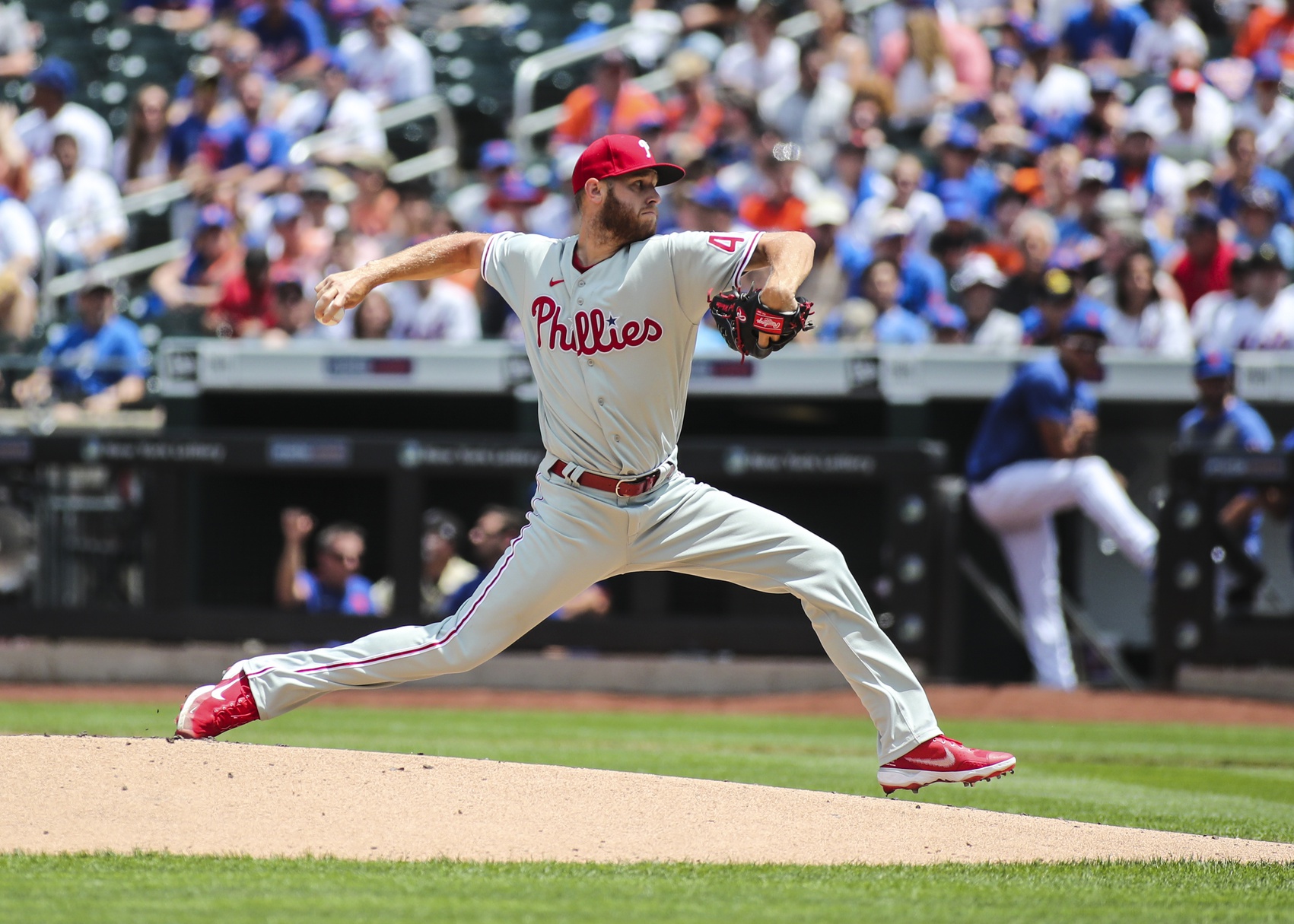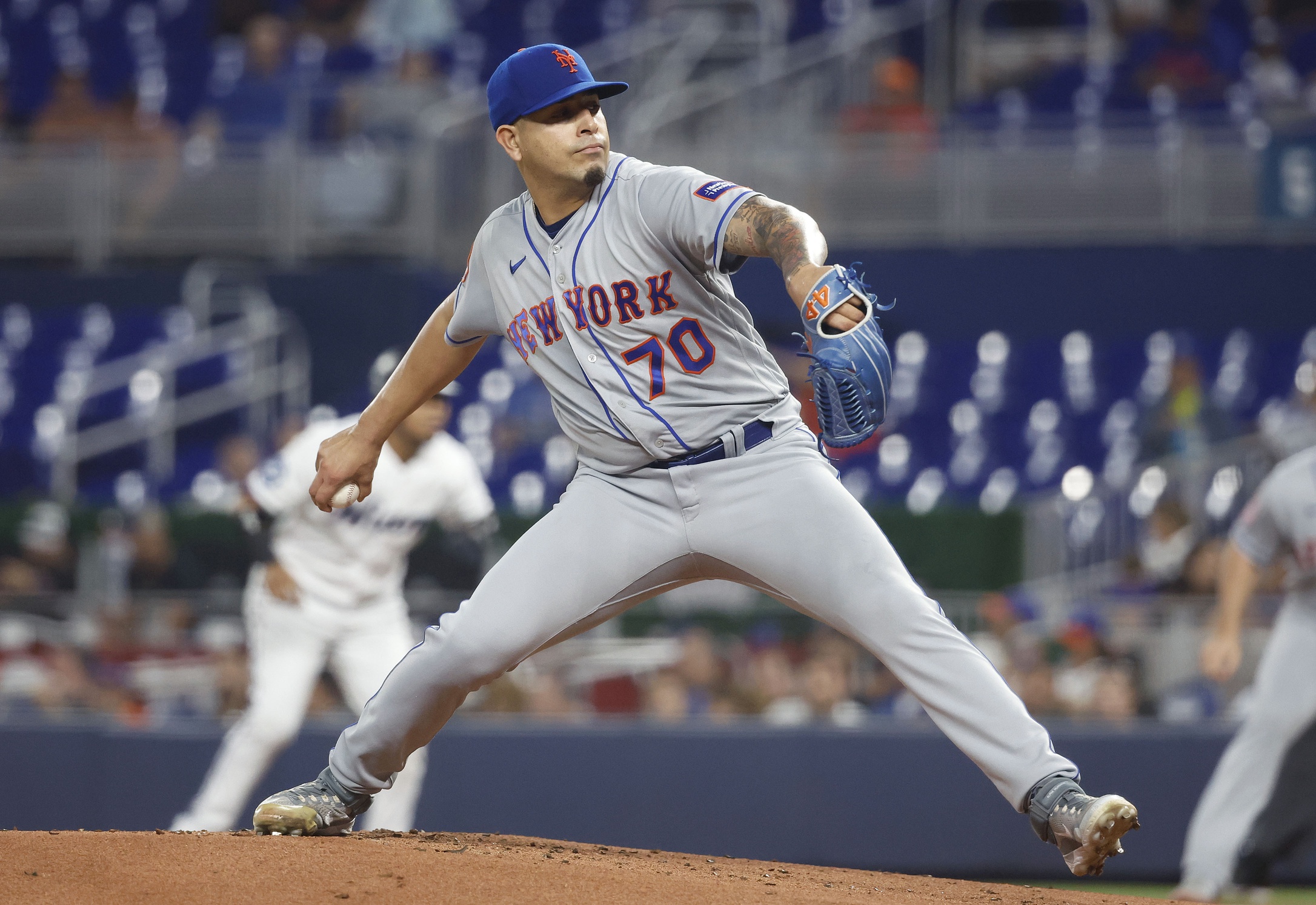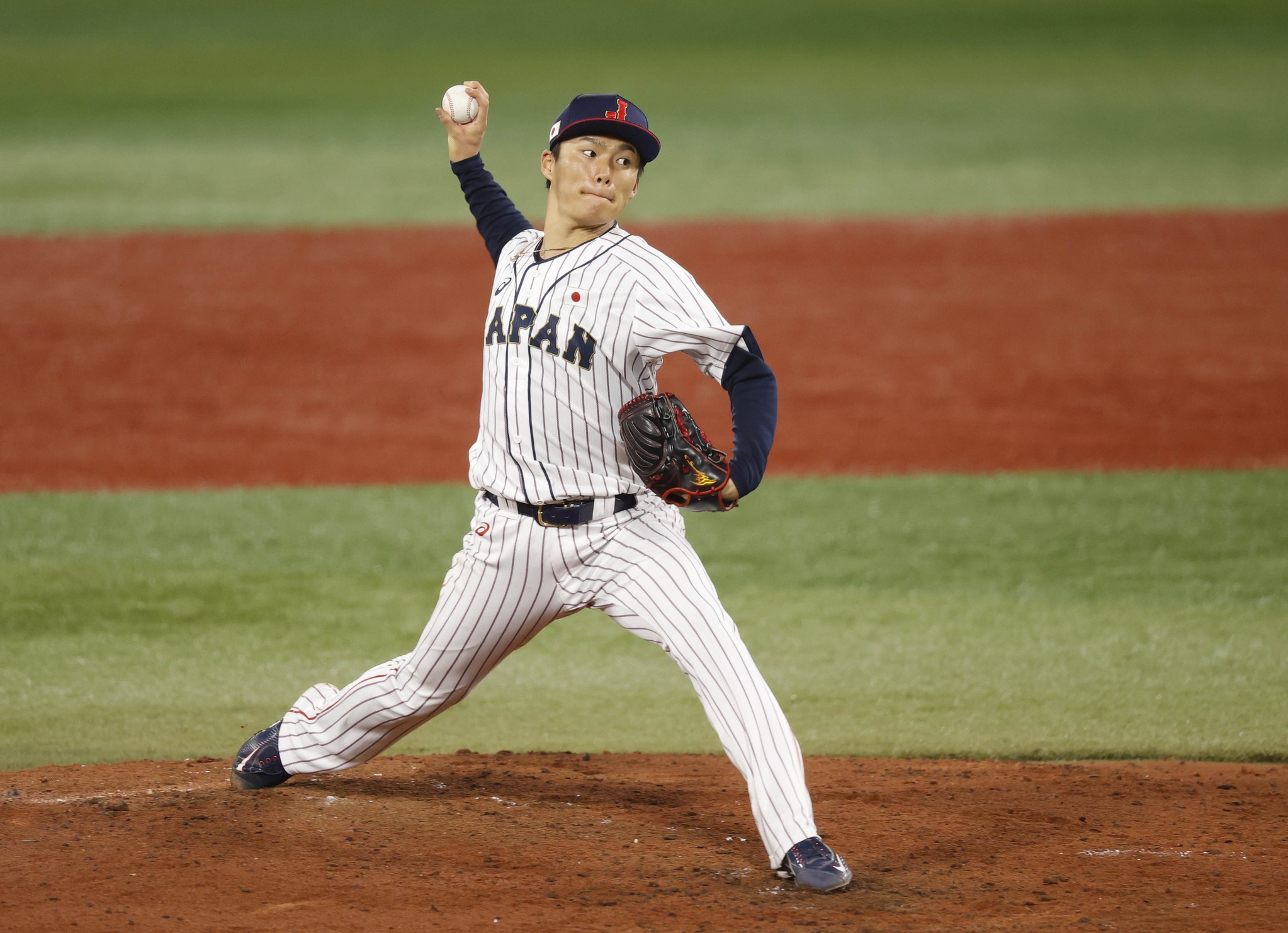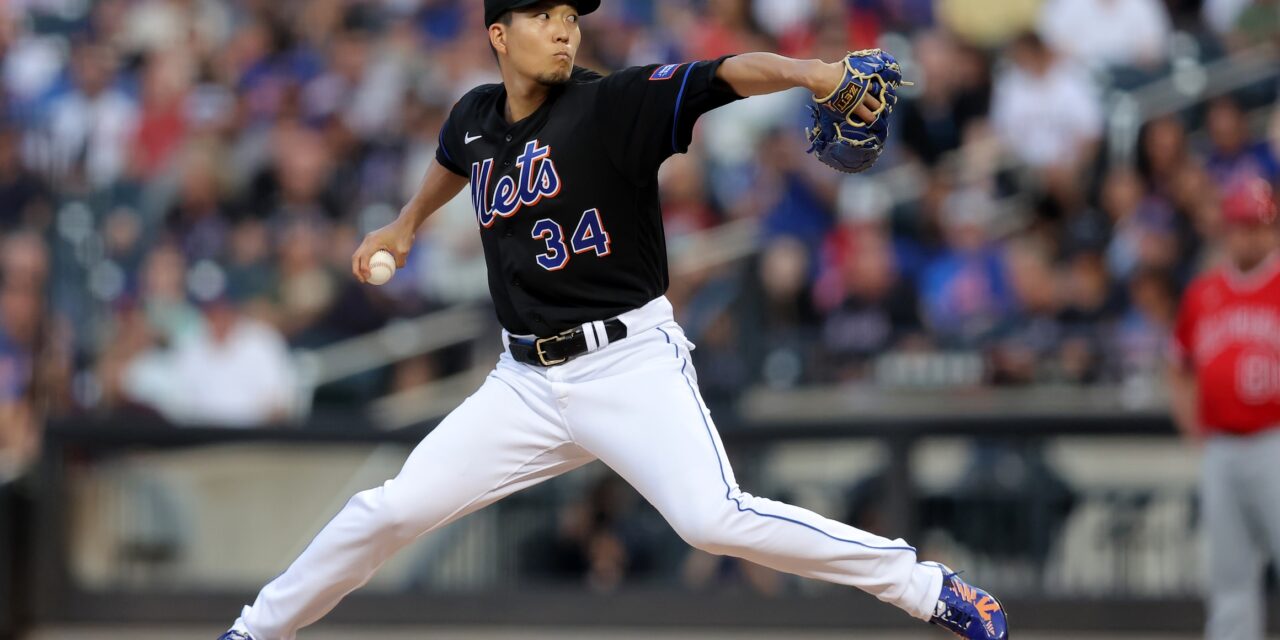On Wednesday, Joel Sherman of the New York Post reported the perception from a baseball executive is that the Mets are “going full bore” to bring in Yoshinobu Yamamoto and Shōta Imanaga this offseason.
It makes sense. The Mets desperately need starting pitching, Yamamoto is one of the most attractive option on the market, and Imanaga is no slouch himself. Instead of going into why each of them are targets, let’s go into what the Mets should do if they somehow pull of signing them – and a strategy that may work no matter which starters they add.
If they manage to bring in both Yamamoto and Imanaga, the Mets should take the leap and go to a six-man starting rotation. Not only would this approach be wise if those two are signed, but also a method that should be considered either way.

Yu Darvish. Mandatory Credit: David Banks-USA TODAY Sports
In 2014, a story by David Waldstein was published in the New York Times about Yu Darvish, then the ace for the Texas Rangers, lobbying for a six-man rotation. The article states how in Japan, teams only play six games a week. They use six starting pitchers, and each pitcher only throws once a week.
It wasn’t directly said by Darvish, but the article notes how this was during the same time fellow Japanese starting pitcher Masahiro Tanaka suffered a partially torn UCL. Tanaka was in his first season with the Yankees, brand new to Major League Baseball and brand new to throwing in a five-man rotation. Obviously, the five-man rotation can’t definitively be blamed for the injury, but the article notes how Tanaka never had a serious injury in his career before that.
Darvish said he believed a six-man rotation could reduce the stress on pitchers elbows.
“If you really want to protect players, we should add one more spot to the starting rotation,” Darvish is quoted saying.
Tanaka didn’t end up undergoing Tommy John surgery, he went the rehab route and returned just a couple of months later. He made two starts in September and was good to go for 2015. Unfortunately, by the time Tanaka was back on the mound, Darvish was off it.
On August 13, 2014, 23 days after Waldstein’s article, the Rangers placed Darvish on the disabled list with right-elbow inflammation. He didn’t pitch again until 2016.
During his first spring training start ahead of the 2015 season, Darvish felt discomfort in his triceps. His right elbow, which an Associated Press article from 2015 said checked out fine in the offseason, now showed inflammation and a partially torn UCL. Darvish, unlike Tanaka, underwent Tommy John surgery.
Colby Lewis, a former MLB and NPB pitcher, was quoted in the article voicing his support for a six-man rotation.
“I loved pitching once a week,” Lewis said. “You always felt great, really healthy and strong. Then you come here and pitch every fifth day, and it’s different. Look what happened to Tanaka. I’m not saying that’s the specific reason he got hurt, but it’s worth thinking about.”
Former Mets’ manager Bobby Valentine was also quoted in the article, and like the others he too was in favor of a six-man rotation. Funnily enough, the team he said would benefit the most? The New York Mets.
“When Matt Harvey comes back, why not go to a six-man rotation and take the stress off his elbow?” Valentine said. “You may not have as many starts per season, but you may have more over the length of a career.”

Zack Wheeler.Mandatory Credit: USA TODAY Sports
Would moving to a six-man rotation have prolonged Matt Harvey’s career? Would it have helped Zack Wheeler who underwent his own Tommy John surgery in 2015? There’s no way to know, but it’s interesting to think about looking back.
There’s no use living in the past though, it’s time to live in the present — and the present Mets have an opportunity to take their former mustachioed manager’s advice almost nine years later.
If the Mets are truly “full bore” in their pursuit of Yamamoto and Imanaga, a six-man rotation is the way to go.
Hypothetically, if the Mets land both starters, the rotation would then look like this: Kodai Senga, Yamamoto, José Quintana, Imanaga and newly acquired Luis Severino.
Of those five starting pitchers, three of them would be Japanese. Yamamoto and Imanaga would be in their first season in MLB, and Senga in just his second. Quintana will be 35 years old and coming off a season where he made just 13 starts, and Severino is a reclamation project who has a lengthy injury history.
Plugging a sixth starting pitcher into the rotation would realistically benefit all five of them. Senga already was given extra rest days pretty frequently throughout the 2023 season, and his results showed the benefit of it. If the Mets bring in one of Yamamoto or Imanaga they will likely treat them the same way. If they bring in both, they might have no choice but to go to a six-man rotation to accommodate all the extra rest days.
The Mets have a ton of options for who the sixth starter could be. Of course, they could always add another starting pitcher via free agency or trade, but there are already a lot of in-house options.
Tylor Megill is now over 50 career starts and is an option. Despite his struggles last season, he had a really nice September which could have been a sign of him turning a corner. At worst, he should at least be good for a couple of great starts to open up the year. David Peterson is there too, but his availability is up in the air after undergoing hip surgery in early November.

José Butto. Rhona Wise-USA TODAY Sports
José Butto quietly made nine appearances (seven starts) to the tune of a 3.64 ERA in 2023, headlined by an excellent five-start stretch to end the season. In six of his seven starts, he gave up no more than two earned runs. Butto has definitely earned a chance to win a rotation spot in spring training.
Joey Lucchesi made nine starts in 2023 and had a 2.89 ERA, making him maybe the most attractive candidate to fill the sixth spot in the rotation. He was looking good in 2021 before he got injured, and looked good again when he came back two years later.
There are also now a lot of options in the upper levels of the minor leagues. Mike Vasil, Blade Tidwell, Christian Scott, Dominic Hamel and Tyler Stuart all made starts at Double-A or higher in 2023. While maybe not candidates to make the Opening Day roster (though never say never), they all could be in play for a mid-season call-up.
Long story short, the Mets have options. A six-man rotation is more than possible.
Now, there are some possible downsides. It’s not like MLB will give the Mets an extra roster spot to accommodate the extra starting pitcher. A sixth man in the rotation means the Mets would have a seven-man bullpen as opposed to eight. One of those seven would need to be a long reliever for those games where a starter gets knocked out early, maybe even two. That would leave five-to-six true relief pitchers. Is that enough? There’s no way to know for sure, but there is a wrinkle here that could help it work.

Yoshinobu Yamamoto. Yukihito Taguchi-USA TODAY Sports
One of the benefits to pitching in a six-man rotation is that starting pitchers can throw more pitches each time out. In his final start of the 2023 postseason, Yamamoto threw 138 pitches over nine full innings. That’s unheard of in today’s MLB. In Japan though, throwing well over 100 pitches is much, much more common. Throughout the season, Yamamoto averaged a little over seven innings per start. Imanaga averaged about 6 2/3 innings.
Logan Webb, who led MLB in innings pitched in 2023, averaged a little under 6 ⅔ innings per start. Gerrit Cole averaged 6 ⅓. Zac Gallen was in that area too, as were Framber Valdez, Mitch Keller, Wheeler, Corbin Burnes and a handful of others. Most starters didn’t come close.
Yes, six starters means fewer relievers which could tax the bullpen. However, it could also mean starters going deeper into games, which would help offset that extra tax.
MLB also isn’t like the NPB where teams play six games a week. Sometimes, teams will play seven (or even eight) and these starters will still have to go on five days of rest — but it’s better than four — and there will still be plenty of opportunities for more rest throughout the season.
There’s one more advantage to a six-man rotation that hasn’t been discussed; the Mets could use it as a selling point to get Yamamoto and Imanaga to sign with them. If the Mets go into negotiations saying something along the lines of, “we want to sign both of you, pair you with Senga and commit to a six-man rotation just like you’re already used to,” it could be enough to give the Mets the edge over other potential suitors.
It’s not going to be exactly the same as what is done in Japan, but it can be close. The Mets already have multiple pitchers in their rotation with injury concerns. If they also end up with multiple pitchers in their rotation used to going once a week in Japan, a six-man rotation almost makes too much sense.
















